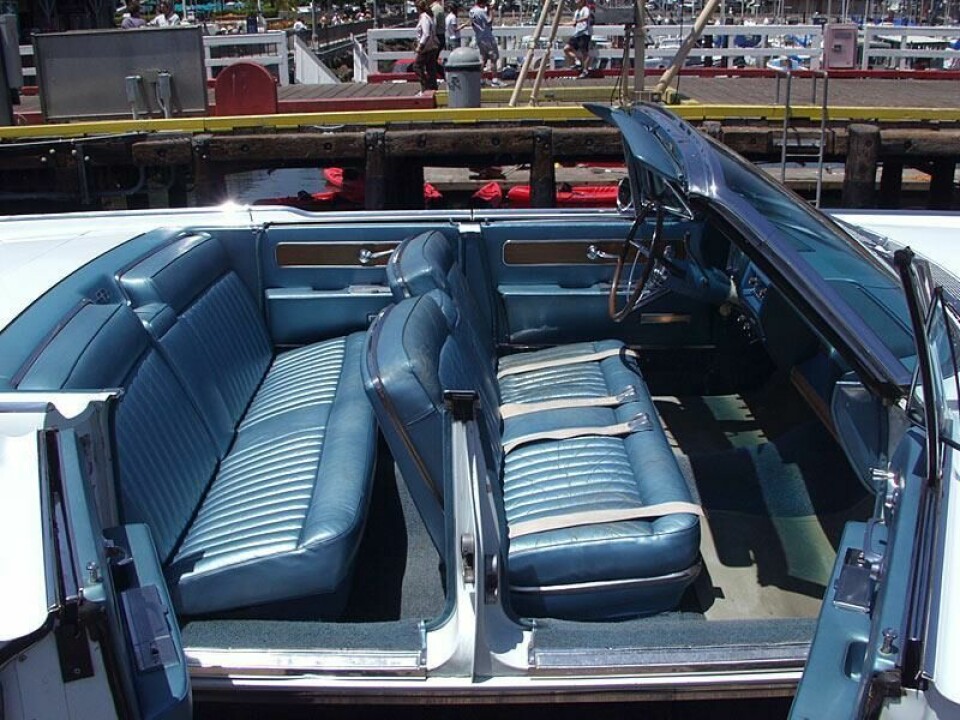
Concept Car of the Week: Lincoln ‘C’ (2009)
Big American Luxury in a C-Segment Car
Over the last generation, it has been difficult to downsize Big American Luxury. The Cadillac Seville was a modest success, but more compact experiments like the Cadillac Cimarron of the 1980s were a disaster.
Today’s luxury cars are definitely smaller than the luxobarges of old, but there seems a limit to how small a Cadillac, Lincoln or Chrysler can go before the buying public judges a vehicle too downmarket to be considered luxury. Import brands, perhaps because of their lack of big car heritage in the American market, seem to be able to market a smaller, premium car more successfully.
A Ship in a Bottle
The answer? A variation on the old ship-in-the bottle trick: Stuffing a big car inside a small one. A small detail, of course, is that this has never been done successfully. In 2008, however, that is exactly the challenge Ford designers set for themselves. The idea was to create an interior reminiscent of the classic Continentals of the 1960s, but place it in a car the size of a Ford Focus, the blue oval’s C-segment world car.
The result was the Lincoln ‘C’, a compact luxury car with interior room that belied its small size. Named for the segment into which it was to be placed, the ‘C’ was designed to be a new expression of what Lincoln could be.

A walk around the ‘C’ revealed its new character. A compact car with a short hood, an upright glasshouse, pronounced wheel haunches, and a bustle-back rear greeted the viewer. The front mask looked decidedly Lincoln, albeit smaller, with the waterfall grille and flanking LED headlamps.
Instead of a hood ornament the Lincoln cross logo was featured prominently between the two halves of the grille. A character line ran across the lower part of the mask, rising on the sides, flowing over the front wheels and then forming a strong shoulder line that ran the length of the car. At the rear this shoulder line became the top of the bustle and curved down over the rear fascia. The side-to-side taillight bar, typical of Lincoln, ran prominently across the rear, and helped emphasize its width and broad stance.

The mass of the car was low, and wide with the greenhouse a more formal element mounted above. Lincoln spoke of a kind of ‘go-kart’ stance, sporty and well grounded, as opposed to the tippy-toe stances found on some smaller cars.
The glasshouse was an upright composition with almost no tumblehome on the sides. The roof was glazed with a frame that echoes the shape of Lincoln’s logo. There was a slender A pillar, no B pillar and a wide formal C pillar placed directly over the rear wheels. Combined with the bustle in the rear, it gave the ‘C’ a bit of a Gallic flavor, somewhat reminiscent of the Renault Megane or Vel Satis.
Continental 2.0
The interior was accessed through – what else – generous suicide doors that opened to a brilliant white and surprisingly spacious interior. Its appointments made it clear that this was intended to be an update of the classic Continental interior, and indeed, Ford claimed that the ‘C’ actually exceeded the interior space of the original, no doubt due to some clever tricks of seating and arrangement of cabin shape.

Broad bench seats allowed for six passengers seated three abreast, as in the original Continental. Headrests automatically popped up from the crown of the seat when occupied, otherwise remaining out of the way. The seats, thin shapely contoured loungers, pushed the legs out like a recliner would, allowing for a more supported but relaxed seating position.
The driver faced a handsome composition of hubless steering wheel and controls: A shapely IP console that seemed to float under the windscreen, a broad curving panel that contained recessed screens for information and controls, and a single touchscreen in the center.

The ‘C’ had an onboard avatar, EVA, who coordinated with the SYNC system to regulate climate control, lighting, sound, and could communicate to the outside world. EVA was a primitive version of Alexa or Siri, and was quite advanced for the time.
There was no center console, gear selection was done on the steering wheel, and vents were cleverly integrated into narrow gaps between surfaces in the console. The result was one of the cleanest, most modern IP compositions in recent memory.
Sensible Indulgence
The anticipated customer base for the ‘C’ was younger urban professionals – Gen Xers and Millenials. They were characterized by Peter Horbury, then Executive Director of Design, The Americas, as “modern luxury buyers who live and work in large, urban areas (and) want to play their part in helping the environment by moving to a smaller vehicle, but they still want to enjoy the luxuries of life. The Lincoln C offers sensible indulgence.”
All this sounds like a perfect description of a MINI customer, and Lincoln has acknowledged MINI’s advances in placing and selling premium small cars. The Lincoln ‘C’ was targeted at that demographic, but unfortunately would remain a car for the show circuit.

Lincoln did finally build a C-segment car in 2014, the MKC. But it was a very conventional crossover, similar to, and sharing the same platform with, the Ford Kuga.
Perhaps the design of the ‘C’ remains pinned on a wall somewhere at Lincoln and will emerge again one day to inform a new era of Lincoln design. In the meantime, Big American Luxury remains big, as expressed in the current product lineup of Lincoln and other luxury brands.



